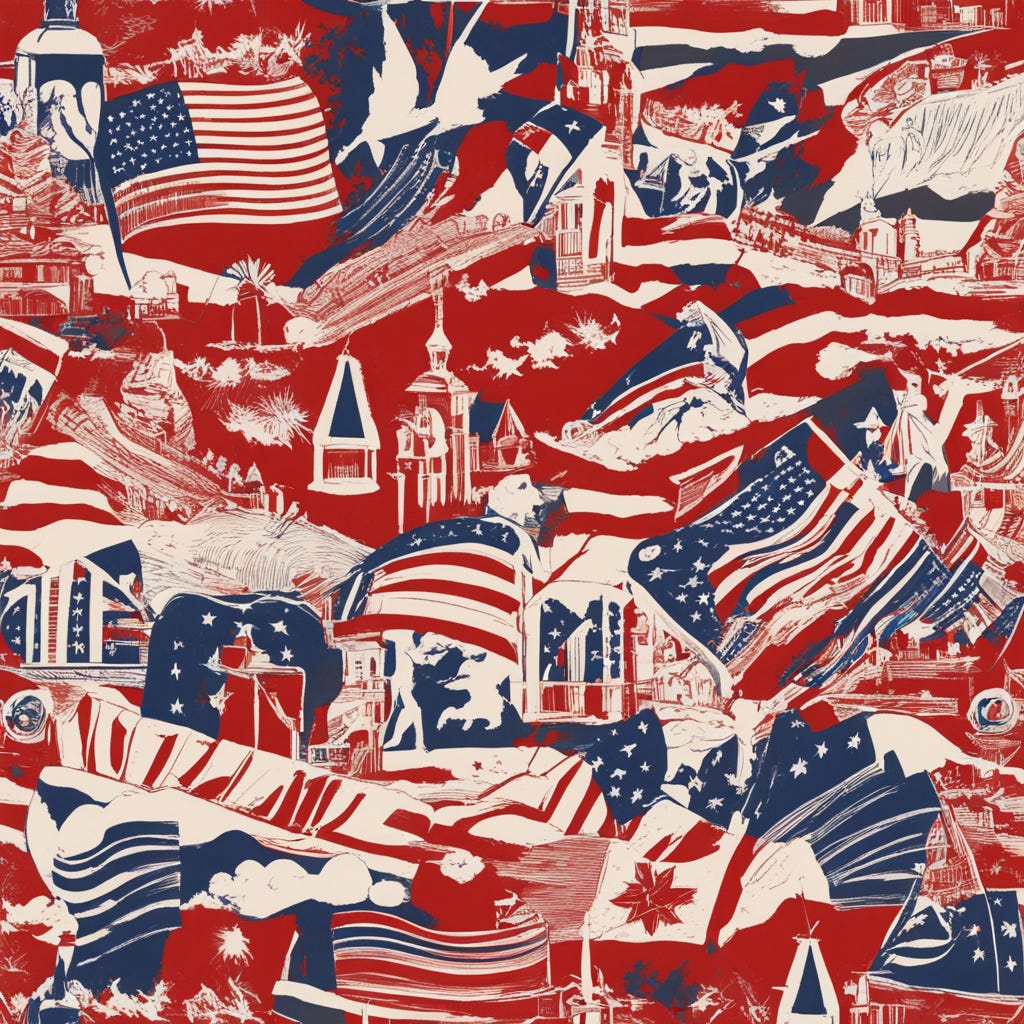War at Harvard: Nothing but a Heart-Breaker?
Restoring a place for patriotic representations of warfare
War, what is it good for? Absolutely Nothing.
It ain't nothing but a heart-breaker
(War) Friend only to The Undertaker
Oh, war it's an enemy to all mankind
The thought of war blows my mind
War has caused unrest
Within the younger generation
Induction then destruction
Who wants to die?
With these lyrics, Norman Whitfield and Barrett Strong of the record label Motown confessed their own inability, common among the artists of the 1970s, to admit any purpose for war beyond the destruction of human lives. The same year as the song’s release, Harvard moved to effectively ban its ROTC program in response to a violent student occupation of University Hall in protest of the Vietnam War. Fifty years later, vacuous pacifism still pervades student attitudes. Clearly, however, readiness for war is good for national unity, virtuous citizenship, the propagation of our national values, and technological development. Where, then, has our martial spirit gone? Has it disappeared entirely, or has it been replaced by something more pernicious?
Until recently, Harvard University was a major supporter of preparation and education for war. The US Military Academy at West Point and the US Naval Academy are the only colleges to have had more alumni earn the Medal of Honor. Our own Memorial Hall and Memorial Church, arguably the most important buildings on campus, are dedicated to Harvard graduates who fought in wars. The Gate of 1857 is dedicated to Harvard students who fought in the Civil War, as is Soldiers Field, the home of Harvard’s Crimson Athletics.
The old-school attitude towards war is still represented symbolically in “Death and Victory” and “The Coming of the Americans to Europe,” two John Singer Sargent paintings that flank the main stairwell in Widener Library. The former painting depicts a soldier carrying its eponymous figures upon the battlefield, and the latter depicts a column of troops coming to the aid of the Allies in Europe. Both are intended to inspire the viewer, especially the Harvard student, who may pass by and glance at them to understand the travails that our peers from another age went through to secure liberty for the world.
Contrast this with a typical 21st century view. Jane Dini, a former curator of the Harvard Art Museums, wrote an article in 1999 titled “The Art of Selling War: Sargent's World War I Murals for Harvard University.”1 The article, which is the Harvard Library system’s official guide to the paintings, argues the following:
“instead of attempting to cast the horrors of the conflict in a realistic mode, as many war artists chose to do, Sargent [...] created images that closely approximated the graphic language of contemporary posters advertising war bonds. That within the context of the Widener Library an imagery allied to commerce and the glorification of war was considered more appropriate than realism underscores the complexities of Harvard’s position within the politics of war.”
Dini is correct that Sargent’s paintings are unrealistic and glorify war, but she fails to explain why this intended purpose should be condemned. She assumes that her audience agrees that war cannot be glorified and that the desire to do so was a delusion of the past. She then distracts from the discussion by saying that the old pro-war view has been replaced with an enlightened, diverse one.
“Unlike the faces in the murals”, she writes, “the current faces at Harvard do not constitute a single identity, and do not see with a singular view. Sargent’s images no longer have force in the collective imagination of the University, and, for the most part, have become invisible, themselves submerged within the shifting and polyglot student body.”
On this point, she is entirely wrong. The current faces at Harvard see only one singular view: war is good for absolutely nothing. Students want nothing to do with it, especially if it involves the sacrifice of their own bodies. But Sargent’s warlike images have not been “submerged” within the student body, no matter how much Dini might desire to minimize their effect by focusing on diversity and identity. Yes, pro-war beliefs have been replaced by pacifism in the University today, but where does that leave the role of duty and sacrifice? They cannot simply disappear.
Today, courage is a concept most frequently associated not with physical courage or martial prowess but instead with breaking perceived social boundaries. While the soldiers who fought for liberty in the Second World War, Vietnam, and elsewhere are problematized, we load activists and agitators with plaudits for braving often imaginary social backlash. Fighting for one’s class or identity group is a much more respectable business than fighting for one’s nation, and standing up to stigma pays better than dodging bullets. These attitudes tell a troubling story about where we, as a nation, place our true loyalties. If service to country is discredited while service to faction is glorified, how can the house stand?
The United States, having occupied a position of world leadership for the last 70 years, can afford to have an elite so self-absorbed that it spends all its time, energy, and focus on internecine class and identity conflicts. Nevertheless, at some point the United States will find itself faced with a challenge it cannot surmount through inertia alone. Our hegemony will wear off, whether it be in fifty, a hundred, or five hundred years. Already, the army is in a “recruiting crisis,” perhaps because it has become totally unable to tap the cultural reservoirs of martial valor, courage, and sacrifice in its advertising, which now focuses on career benefits and tries to present the military experience as video-game-esque. The United States will be in trouble if its universities continue to reject patriotism in favor of stoking socially corrosive class struggles.
If service to country is discredited while service to faction is glorified, how can the house stand?
Harvard can yet again be a leader in military service. We must realize the benefits of being prepared for war—unity, technological progress, the propagation of justice, and virtuous citizenship. We may analyze, but should refrain from stoking, class conflict within our university, instead cultivating a firm sense of patriotism. And we must have a real ideal to strive towards—an ideal that is up for debate, but which can serve as a model for students and the nation.
CYRUS
A version of this article originally appeared in Small World, the December 2022 print issue of the Salient.
Jane Dini, “The Art of Selling War: Sargent's World War I Murals for Harvard University,” Harvard University Art Museums Bulletin (Vol. 7, no. 1, pgs. 67-84, Autumn 1999-Winter 2000).




Postmodernism replaced Christianity as the religion of the elites (see Cynical Theories). This has had a corrosive effect and now our public schools are being absorbed by the Marxist hive mind. This is an ideological battle that needs to be fought from the top. It is impossible to fight it from not the bottom. Judeo-Christianity gave us a culture of freedom. These other religions are leading only to despotism. Harvard needs to start telling the truth about this culture war... it's Christianity or Communism.
“In war, prepare for peace; in peace, prepare for war.” – Sun Tzu, author, 'The Art Of War'. This manuscript, written over 2500 years ago.